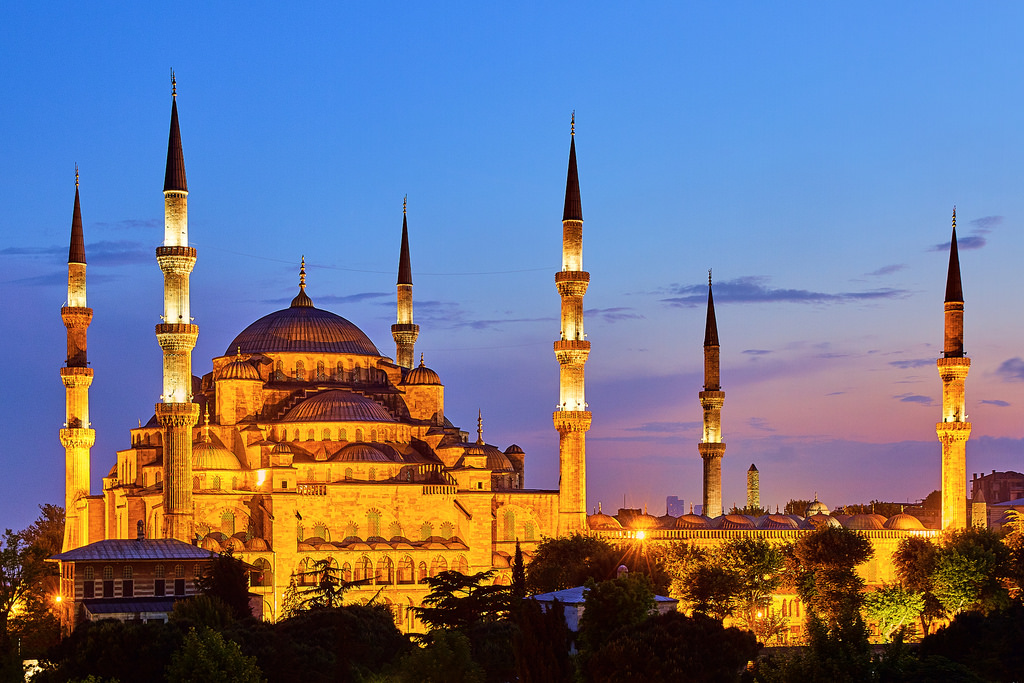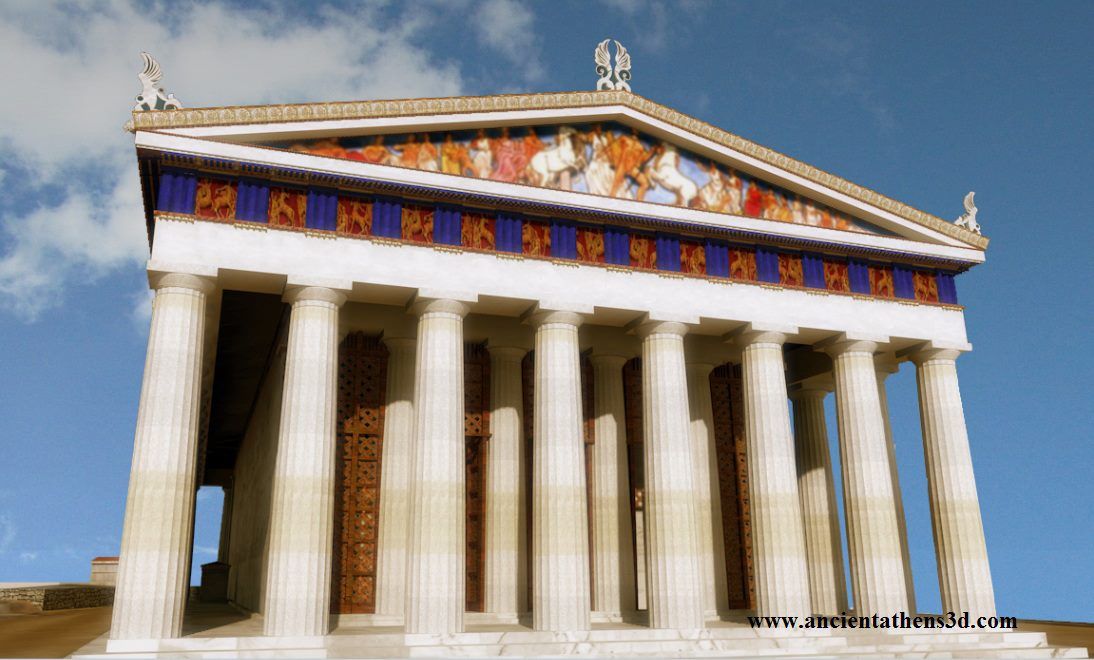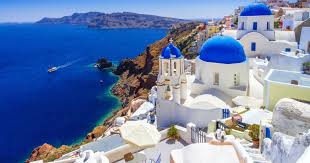Mediterranean Cities
Istanbul
We bring you the best in Greek and Mediterranean food. Here are some interesting historical facts about Istanbul and Greece, the origin of some of these foods.
Istanbul, historically known as Byzantium and before 1924 as Constantinople, is the most populous city in Turkey and the country's economic, cultural, and historic center. Istanbul is a transcontinental city in Eurasia, straddling the Bosporus strait (which separates Europe and Asia) between the Sea of Marmara and the Black Sea. Its commercial and historical center lies on the European side and about a third of its population lives on the Asian side.[9] The city is the administrative center of the Istanbul Metropolitan Municipality (coterminous with Istanbul Province), and with a total population of around 15 million residents,[3] Istanbul is one of the world's most populous cities and ranks as the world's fourth-largest city proper and the largest European city. Istanbul is viewed as a bridge between the East and West.
 Istanbul Blue Mosque
Istanbul Blue Mosque
Athens
 Greek Parthenon
Greek Parthenon
We bring you the best in Greek and Mediterranean food. Here are some interesting historical facts about Istanbul and Greece.
The site on which Athens stands was first inhabited in the Neolithic period, perhaps as a defensible settlement on top of the Acropolis ('high city'), around the end of the fourth millennium BC or a little later. The Acropolis is a natural defensive position which commands the surrounding plains. The settlement was about 20 km (12 mi) inland from the Saronic Gulf, in the centre of the Cephisian Plain, a fertile valley surrounded by rivers. To the east lies Mount Hymettus, to the north Mount Pentelicus.
Ancient Athens, in the first millennium BC, occupied a very small area compared to the sprawling metropolis of modern Greece. The ancient walled city encompassed an area measuring about 2 km (1 mi) from east to west and slightly less than that from north to south, although at its peak the ancient city had suburbs extending well beyond these walls. The Acropolis was situated just south of the centre of this walled area.
The Agora, the commercial and social centre of the city, lay about 400 m (1,312 ft) north of the Acropolis, in what is now the Monastiraki district. The hill of the Pnyx, where the Athenian Assembly met, lay at the western end of the city. The Eridanus (Ηριδανός) river flowed through the city.
One of the most important religious sites in ancient Athens was the Temple of Athena, known today as the Parthenon, which stood on top of the Acropolis, where its evocative ruins still stand. Two other major religious sites, the Temple of Hephaestus (which is still largely intact) and the Temple of Olympian Zeus or Olympeion (once the largest temple in mainland Greece but now in ruins) also lay within the city walls.
Santorini is an island in the southern Aegean Sea, about 200 km (120 mi) southeast of Greece's mainland. It is the largest island of a small, circular archipelago, which bears the same name and is the remnant of a volcanic caldera. It forms the southernmost member of the Cyclades group of islands, with an area of approximately 73 km (28 sq mi) and a 2011 census population of 15,550. The municipality of Santorini includes the inhabited islands of Santorini and Therasia and the uninhabited islands of Nea Kameni, Palaia Kameni, Aspronisi, and Christiana. The total land area is 90.623 km(34.990 sq mi). Santorini is part of the Thira regional unit.
Santorini is essentially what remains after an enormous volcanic eruption that destroyed the earliest settlements on a formerly single island, and created the current geological caldera. A giant central, rectangular lagoon, which measures about 12 by 7 km (7.5 by 4.3 mi), is surrounded by 300 m (980 ft) high, steep cliffs on three sides. The main island slopes downward to the Aegean Sea. On the fourth side, the lagoon is separated from the sea by another much smaller island called Therasia; the lagoon is connected to the sea in two places, in the northwest and southwest. The depth of the caldera, at 400m, makes it impossible for any but the largest ships to anchor anywhere in the protected bay; there is also a fisherman's harbour at Vlychada, on the southwestern coast. The island's principal port is Athinios. The capital, Fira, clings to the top of the cliff looking down on the lagoon. The volcanic rocks present from the prior eruptions feature olivine, and have a small presence of hornblende.
Sparta
Sparta was a prominent city-state in ancient Greece. In antiquity the city-state was known as Lacedaemon, while the name Sparta referred to its main settlement on the banks of the Eurotas River in Laconia, in south-eastern Peloponnese. Around 650 BC, it rose to become the dominant military land-power in ancient Greece.
Given its military pre-eminence, Sparta was recognized as the leading force of the unified Greek military during the Greco-Persian Wars.Between 431 and 404 BC, Sparta was the principal enemy of Athens during the Peloponnesian War, from which it emerged victorious, though at a great cost of lives lost. Sparta's defeat by Thebes in the Battle of Leuctra in 371 BC ended Sparta's prominent role in Greece. However, it maintained its political independence until the Roman conquest of Greece in 146 BC. It then underwent a long period of decline, especially in the Middle Ages, when many Spartans moved to live in Mystras. Modern Sparta is the capital of the Greek regional unit of Laconia and a center for the processing of goods such as citrus and olives.



